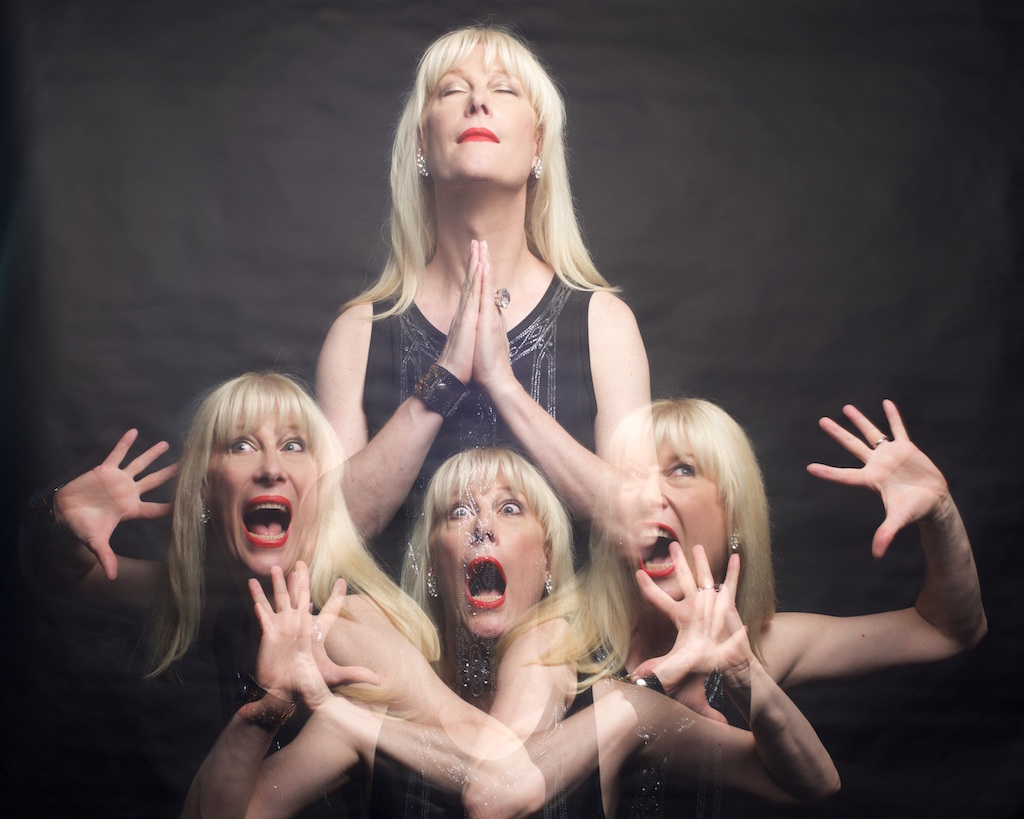
ART NEWS
‘Tis the Season: Justin Vivian Bond Subverts the Spirit of the Holidays
Justin Vivian Bond has a habit of gracing holiday cabaret shows with sentiments attributable to a slightly skewed perspective. Previous titles for the artist’s seasonal affairs include “Star of Light! An Evening of Bi-Polar Witchy Wonder” and “The Bi-Polar Express,” and musical offerings within them have been known to showcase stirring renditions of songs such as “Somebody’s House Always Burns At Christmas.” This year, in the cozy environs of Joe’s Pub in New York, the tradition continues with a multi-night run for the newest variation on a theme: “Justin Vivian Bond: Manger Danger! Jesus as a Weapon and a Tool.”
The musically inclined and monologue-inclusive show—which opened last night and continues through December 23—follows in a lineage tracing back to Bond’s holiday-themed shows as part the outlandish cabaret duo Kiki & Herb, for which the artist channeled the persona of a booze-swilling, pill-popping octogenarian with a grizzled voice and a tendency to overshare. Music is the centerpiece, but garrulous banter between songs—as well as lyrics in the songs themselves, some of them originals and many of them covers of pop stars including Joni Mitchell, Taylor Swift, Adele, Radiohead, Prince, Judee Sill, and so on—coalesce into collective narratives about holidays both enjoyed and endured.

W MAGAZINE
New York Icon Justin Vivian Bond Is Modeling Some Personal History at the New Museum This Halloween
Justin Vivian Bond burst onto the New York nightlife scene two decades ago as Kiki DuRane, one half of the famed cabaret show Kiki and Herb with Kenny Mellman. But a few years ago, Bond began departing from their well-known antics as the boozed up, ancient lounge singer Kiki by beginning performances with standing for two minutes in complete silence onstage, interrupting the audience’s discomfort and surprise only to declare what was by then obvious: “Two minutes is a long time.”
Those words are also the only ones that Bond has ever heard spoken by Karen Graham, the 70's and 80's model and former face of Estée Lauder, whom they idolized as a child. The performance was an homage. “When you’re a cisgender little boy or girl, you’re raised to emulate the parent of the gender that you are, and you sort of form your identity around—or against—their experience of being a man or a woman," Bond, who is transgender and uses they/them pronouns, explained. "But if you’re trans, you have to look outside of your family to think about role models and the way you want to be.”

VULTURE
The New Museum’s ‘Trigger’ Is Radical in Content, Retrograde in Form: What Should We Make of That?
I wish I didn’t feel as conflicted as I do about “Trigger: Gender As a Tool and a Weapon,” the New Museum’s scattershot, building-filling group show about “gender beyond the binary.” There is plenty to admire in the show, organized by Johanna Burton, including new artists worth celebrating and the greater political cause: to cry havoc at the rising tides of hatred and sketch out the new landscape of identity-driven, gender-politics-inflected art. But “Trigger” does not ultimately deliver on that promise, mostly because it fails to showcase new forms of disruptive radicalism. For an exhibition about things “blurred,” “trans,” and not “normative,” “Trigger” is laden with art that too neatly fits into totally known and familiar lineages, namely post-conceptualism of the 1960s and 1970s. The result is that — much as I wished the show could be — “Trigger” cannot be rightly called a new Transavantgarde (after the explosive 1980s Italian art movement).

TIME OUT NEW YORK
Review: “Trigger: Gender as a Tool and a Weapon”
As Donald Trump provokes a backlash against a laundry list of marginalized groups, many museums have commendably stepped up with programming aimed at countering the reactionary tone of the current administration. Think about this exhibition, then, as a salvo in the rekindled culture wars. Featuring more than 40 artists and collaborative groups, “Trigger” grows out of the idea that what we talk about when we talk about gender has shifted from a fixed and simple binary to something multiplicitous, contentious and unstable.
But given the dynamic provocation of its title and the urgent charge of its topic, the show comes off as a surprisingly lugubrious affair. Despite a smattering of stellar works and an admirably diverse list of artists, too much here fails to engage, or is too tangential to the subject. The exhibition seems undercooked—more like one of New Museum’s shambolic Triennials than a thematic show with a persuasive curatorial thesis. For instance, though Nancy Brooks Brody’s series of “Glory Hole” paintings—netlike organic grayscale grids with flashes of color so subtle they appear more illusory than real—are exquisite and mesmerizing, their precise connection to gender mystifies this viewer.

FORBES
'Trigger' Exhibition At The New Museum Tackles Gender But Ponders So Much More
The New Museum’s curatorial program, in my opinion, is currently without peer. There is no art museum introducing more new ideas and sharing more radical art on such a large stage. For years now I have been transfixed by its endless stream of must-see art exhibitions from some of the most important and subversive contemporary artists working today: Chris Ofili, Jim Shaw, Pia Camil, Nicole Eisenman, Cally Spooner, Pipilotti Rist, Raymond Pettibon, Carol Rama and Kaari Upson have all delivered knock out exhibitions at the storied Bowery-located museum since 2015. But even with a museum delivering shows as sophisticated as The New Museum, any show with 40 plus artists is going to run into curatorial issues. Just look at the debacle over the Whitney’s inclusion of Dana Schutz’s painting of Emmet Till. That show, curated around a concept of political resistance, ended up a lightning rod for criticisms of cultural appropriation.

THE NEW YORK TIMES
When It Comes to Gender, Let Confusion Reign
The New Museum isn’t new any more. It hit 40 this year, by some reckonings early middle age, though it’s still thinking young, or youngish, and living in the now. One thing that made it feel fresh early on was that it did shows on themes no other museums were tackling, like the 1982
“Extended Sensibilities: Homosexual Presence in Contemporary Art,” the first major American institutional survey of work by gay and lesbian artists. Now comes another such venture, “Trigger: Gender as a Tool and a Weapon,” a look at concepts of “trans” and “queer” as embodied in new art. “Extended Sensibilities” had problems. With its inclusion of abstraction along with figurative work, it struck some viewers as not explicitly gay enough, as dodging the political issues its title raised. A similar charge of indirection, or indeterminacy — I’d call it healthy disorder — could probably be leveled at “Trigger.”
As an exhibition, its brief is to break down, through art, the binary male-female face-off that gay and lesbian often represented, to stretch the perimeters of gender to the snapping point.

THE NEW YORK TIMES
Gender-Fluid Artists Come Out of the Gray Zone
In the window of the New Museum this month, the performance artist Justin Vivian Bond plans to periodically strike a pose in a pink gown with rhinestone teardrop, framed by hand-drawn wallpaper twinning the artist’s face with that of the former Estée Lauder model Karen Graham. As a closeted transgender teenager in the 1970s, Bond obsessively drew Ms. Graham, until “I made myself my canvas.” The artist is wearing a vintage dress by Frank Masandrea, one of several little-known couturiers who outfitted Ms. Graham before AIDS cut them down in their creative prime.
The project, “My Model | MySelf: I’ll Stand by You,” proudly puts what Bond calls a “queer face” on the glamour created by gay people that has long been appropriated by mainstream culture. The designers “served the aspirational whim of wealthy upper-class white women and then were completely dismissed by history,” the artist said.
Bond is one of more than 40 intergenerational artists in “Trigger: Gender as a Tool and a Weapon,” opening on Sept. 27 with work that explores gender beyond the binary of “male” and “female.”

TIME OUT NEW YORK
Justin Vivian Bond talks couch surfing in the West Village and beyond in 1994
I moved here in June of 1994. I had a great life in San Francisco, but I had bigger dreams, so I had to be in New York. I was basically couch surfing for almost the first year. I spent quite a bit of time with my friend Victoria Leacock in her duplex on 9th between Fifth and Sixth. A friend joked that I was the only homeless queen she knew who was staying in a duplex off Fifth Avenue. But such is my life, you know? It was pretty glamorous, looking back on it.
I tried to get a lay of the land, because I didn’t want to get sucked into the wrong scene. Finally I started to vibe in the East Village with people like Mistress Formika and Sherry Vine. I liked the stoner queens as opposed to the ecstasy and cocaine queens you would find in the big clubs. I went to Jackie 60 quite a lot, where I met a lot of my friends. And my favorite party was, of course, Squeezebox at Don Hill’s. It was drag queens singing live rock & roll music with a band, and that was my fantasia.
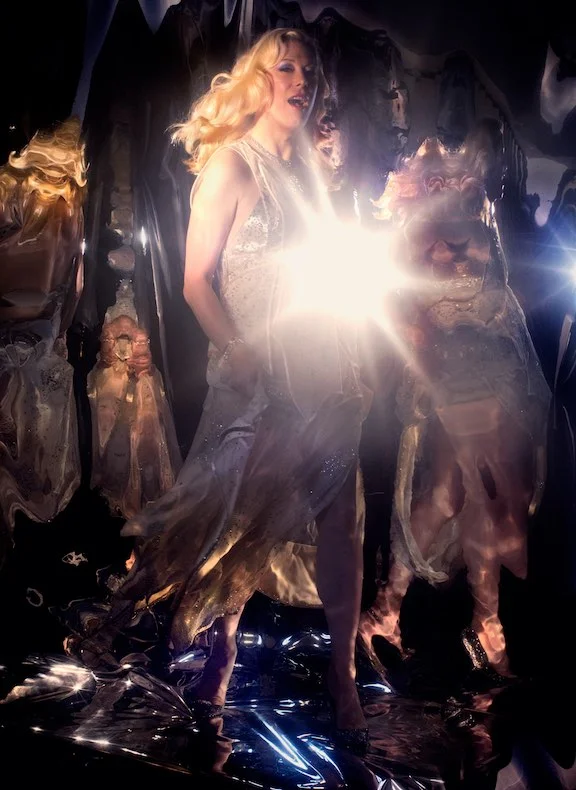
THE AUSTIN CHRONICLE
Mx. Justin Vivian Bond Comes to Austin
The queer cabaret legend is the friend we all need right now
The legendary performer – who’s starred in John Cameron Mitchell's Shortbus, won the Lambda Literary Award for their memoir Tango: My Childhood, Backwards and in High Heels, and was nominated for a Tony – is coming to town for just one night (and a quick symposium at UT-Austin) to help build a stronger and brighter community bond at a time when queer and trans folks need it most.
With a president determined to stifle the voices and rights of marginalized communities, the cabaret stage has yet again become a catharsis for Vivian. Citing the intersectional activism and art happening between marginalized communities, Vivian said, “Bringing all these different groups together with one common cause … that is a really powerful thing that you are unleashing.”
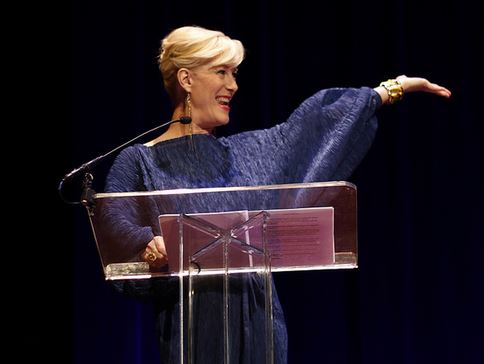
LGBT WEEKLY
29th Annual Lambda Literary Award winners announced
ambda Literary, the nation’s leading organization advancing lesbian, gay, bisexual, and transgender (LGBT) literature, announced the winners of the 29th Annual Lambda Literary Awards (the “Lammys”) at a ceremony hosted by multi-genre artist Justin Vivian Bond at NYU Skirball Center for the Performing Arts in New York City. The ceremony brought together attendees, sponsors, and celebrities to celebrate excellence in LGBT literature and twenty-nine years of the groundbreaking literary awards.
“Authors putting words in order artfully and with thought is a revolutionary thing in the climate we are living in,” said Bond as she opened the ceremony. “I want to congratulate everyone who’s nominated tonight. We’re here to celebrate you for the gift you have given us with your artistry.”
One of the Middle East’s most celebrated voices, Rabih Alameddine won in the Gay Fiction category for his novel The Angel of History (Grove Press).
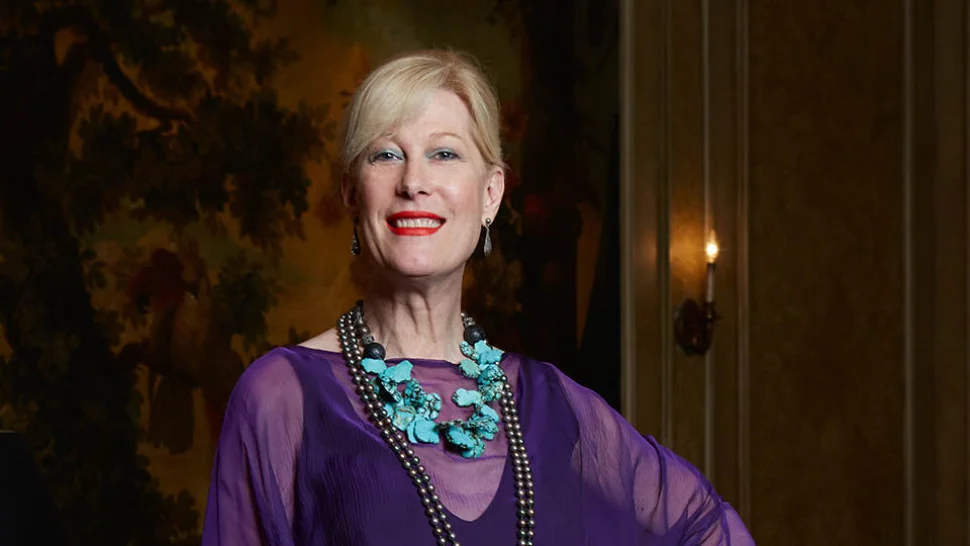
PLAYBILL
Justin Vivian Bond Makes Broadway History with Tales of the City
The casting of the genre- and gender-defying artist is a breakthrough moment for transgender actors on Broadway.
When Mx. Justin Vivian Bond takes the stage as Anna Madrigal in the musical adaptation Armistead Maupin’s Tales of the City March 27 at the Music Box Theatre, v (Bond’s preferred pronoun) will make history as the first actor who identifies as transgender to play a trans character on Broadway.
Madrigal’s famous words to her new tenant Mary Ann Singleton, “Good. You’re one of us then. Welcome to 28 Barbary Lane,” will be an affirmation.
Tales of the City’s New York arrival—even if only for a one-night-only benefit concert—has been anticipated since its 2011 premiere at San Francisco’s American Conservatory Theatre. In the show’s world premiere, Anna Madrigal—who reveals that she is transgender—was played by Tony Award-winning actor Judy Kaye.
“I thought it was fantastic,” Bond says of the ACT premiere. “I thought Judy Kaye was amazing, but even so, I was a little disappointed that they didn’t have a trans woman playing the part of Anna Madrigal.

THE VILLAGE VOICE
How The Whitney Houston Biennial Help To Push Feminist Art Forward
In New York’s abundance of art fairs and gallery shows, male artists have always tended to outnumber female artists. One show this Spring, however, sought to change this gender imbalance: The Whitney Houston Biennial. The exhibition, which was founded two years by curator and painter Chritsine “C.” Finley, has since doubled in the size of the space and the number of artists included. This year’s show features over 160 female-identified artists.
“For the first version, I imagined that if I was tapped as the curator of the Whitney, I would show three floors of women artists,” says Finley. “When I told this to my friend, the artist Eddy Segal, she immediately made a joke and said, ‘The Whitney Houston Biennial!’ We laughed like crazy but I also realized that I had to do it. We created such a wonderful platform for highlighting female artists, I knew we needed to keep going. I am already arranging for 2019!”

HYPERALLERGIC
The Greatest Biennial of All
The Whitney Houston Biennial is back, showing the work of 167 women artists.
Three years ago, the Whitney Museum opened its last biennial in the Marcel Breuer building, a sprawling but largely inward-facing show that drew heavy criticism for its lack of diversity. Just a few days later, a one-night exhibition of 85 women artists popped up in a small studio space in Brooklyn. Though it wasn’t expressly positioned as a response to the Whitney Biennial, the Whitney Houston Biennial seemed to revel in inclusivity and, in that sense, felt like a rebuttal.
Now the 2017 Whitney Biennial has arrived in the museum’s new home, bringing it with both praise — for showcasing a more heterogeneous group of artists engaged with the world around them — and considerable critique — for hollow depictions of violence. Alongside it, the Whitney Houston Biennial has quietly made a return too, in a space run by Chashama just 1.5 miles from the main event and lasting for 10 days instead of four hours.

BROADLY
Trans Artist Justin Vivian Bond Envisions a World Without Binaries
The New York performer recently curated a five-day festival, "Mx'd Messages," that explores everything from trans-theology to afrofuturism.
Justin Vivian Bond, known to friends as Vivian, is a transgender singer-songwriter, author, painter, performance artist, actor, activist, and everything else in between. (Bond uses the pronouns they/them.) Based in New York City's East Village, Bond recently curated New York Live Art's annual Live Ideas Festival, which ended this weekend.
In response to reactionary, right wing narratives that increasingly dictate our lives, Bond centered the festival around building new narratives across all marginalized communities. The festival's keynote, "Queer as in Fuck You: Under The Influence of Homocore," was a tribute to the queer anarchist punks who "set the stage for the conversations that eventually led to queer theory and changed the way we demonstrate and advocate politically," Bond said in an interview with Broadly.

OUT
Justin Vivian Bond's LIVE IDEAS Series 'Mx'd Messages' Reimagines a World Without Binaries
Running this week is New York Live Arts' 2017 LIVE IDEAS festival, which features a series called "Mx'd Messages," curated by queer icon and trans-genre artist Justin Vivian Bond. The event includes panels, workshops, keynotes, installations and performances from global LGBTQ artists including Hari Nef, Macy Rodman, Kate Bornstein and Severely Mame, among others.
Mx'd Messages aims to reimagine the world without binaries, looking at how that affects gender, politics, theology, sensory perception and race. After events running from March 14 to 19, Mx Bond's series will end with a queer punk rock dance party. Her curatorial effort falls in line with New York Live Arts' "annual humanities festival of arts and ideas," which explores the "ideas, controversies and thinking informing a different bodily-oriented theme each time out."
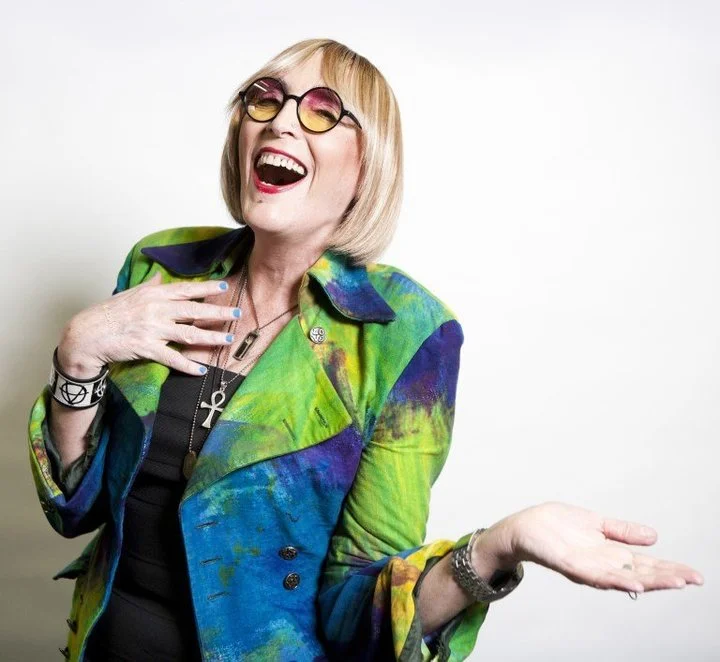
THE HUFFINGTON POST
What Would It Be Like To Live In A World Without Binaries?
“The world I imagine is full of imagination and freedom.”
A large-scale humanities festival of arts and ideas is underway this week in New York City, bringing together LGBTQ artists and creatives from across the spectrum of personal identities.
Presented by New York Live Arts, this year’s “Mx’D Messages” festival is curated by Justin Vivian Bond and Elizabeth Koke. “Mx’D Messages” asks the question: what would it be like to live in a world without binaries ― across the lines of “gender, politics, theology, sensory perception and race”?
Roughly 75 different artists, activists and speakers are scheduled to be involved with “Mx’D Messages,” including Laverne Cox, Kate Bornstein, Hari Nef, Colin Self and more.
“When we started to put this festival together, the 2016 election hadn’t happened yet,” Bond and Koke said in a joint statement sent to The Huffington Post. “Now that it has, this festival really feels like an important intersectional gathering of queer community. Civil rights are under attack, and creative expression is threatened.

VOGUE
“I’m Going to Come in Like Gaga at the Super Bowl”—Justin Vivian Bond Talks Creative Collaboration With Rachel Comey
Rachel Comey is switching things up this season, relocating her signature dinner cabaret–meets–fashion show from Red Hook, Brooklyn, to downtown L.A. But there will be one familiar face at Comey’s extravaganza at the Hauser Wirth & Schimmel gallery tonight: performer Justin Vivian Bond, who will be marking the third time serving as the event’s de facto emcee. A friend of Comey’s from way back, Bond—known to pals as Vivian—helped the designer create her sui generis show form, which typically interweaves music, monologue, and a trio of model défilés that accompany the serving of dinner courses. And what do Bond and Comey have planned this time out? “I’m going to come in like Gaga at the Super Bowl, on a rip cord,” Bond wisecracks. “I’m looking forward to seeing that,” Comey retorts, matching Bond’s deadpan. Rip cords or no, over cocktails at a restaurant near Comey’s newish Los Angeles store, the two dropped a few hints about their plans for the designer’s L.A. debut—and dished about the differences, or not, between the East Coast and West Coast.

OUT
Justin Vivian Bond and Penny Arcade Discuss the Role of Art in Trump's Era
Great art subverts, drawing attention to what is wrong and corrupt in society while forging communities that draw strength from their collective outrage. The spiraling anxiety that many of us have felt since the election on November 8 is familiar territory for artists who were around in the 1980s when Ronald Reagan and the rise of the Christian right coincided with the emergence of AIDS, creating a vibrant countercultural space. Here, two veterans of New York’s performance-art scene, Justin Vivian Bond and Penny Arcade, reflect on the current crisis.
Justin Vivian Bond: As a young person in the 1980s and early ’90s, I found that the AIDS crisis gave me a trajectory. What was created during that time was a template, and now it seems more relevant than it has in a very long while.
Penny Arcade: I’ve been so angry about the lack of justice in the country for decades, but what’s different from Reagan or Bush is that we’re looking at the fruition of 50 years. What is going on right now is unprecedented.

















